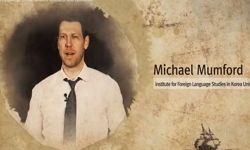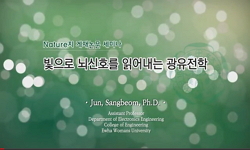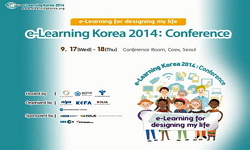During the Korean War (1950-1953), most of the Korean peninsula was devastated by indiscriminate bombing, and those who survived the war suffered poverty and famine in the 1950s. In the 1960s and 70s, industry and the economy became the top priority i...
http://chineseinput.net/에서 pinyin(병음)방식으로 중국어를 변환할 수 있습니다.
변환된 중국어를 복사하여 사용하시면 됩니다.
- 中文 을 입력하시려면 zhongwen을 입력하시고 space를누르시면됩니다.
- 北京 을 입력하시려면 beijing을 입력하시고 space를 누르시면 됩니다.
https://www.riss.kr/link?id=T10105303
- 저자
-
발행사항
[Lothian] : University of Edinburgh, 2005
-
학위논문사항
Thesis(doctoral) -- University of Edinburgh , [기독교신학] , 2005
-
발행연도
2005
-
작성언어
영어
- 주제어
-
KDC
231 판사항(4)
-
발행국(도시)
England
-
형태사항
ix, 310p. : Illustrations ; 26cm.
-
일반주기명
References: p.284-310
-
소장기관
-
0
상세조회 -
0
다운로드
부가정보
다국어 초록 (Multilingual Abstract)
During the Korean War (1950-1953), most of the Korean peninsula was devastated by indiscriminate bombing, and those who survived the war suffered poverty and famine in the 1950s. In the 1960s and 70s, industry and the economy became the top priority in the setting of national policies. As a result, water and air was intolerably polluted by industrial and domestic waste and by the smoke emissions of vehicles and factories, and environmental concern consequently became an urgent priority in the 1980s-90s. Although there were some voices of protest from environmental organizations against this indiscriminate industrialisation, their campaigns could not prevent the onslaught.
The old Korean proverb "body and land are not two but one (身土不二)", reflects the belief of most Korean people that they cannot live apart from the land of Korea. The contemporary ecological crisis reminds us of a serious question: Can people and nature continue to co-exist in the future? The environmental movement, apart from aiming at protecting the natural world from human beings' exploitation, should seriously find a way to change a world view or one's sense of values which continuously influence people's lifestyle. 'Ecological worldview' in this thesis denotes a religious or philosophical reflection on the way that humanity and all other organisms can co-exist, critically reviewing the failings of the existing world views, which led to the present ecological crisis, and suggesting a relationship model between humanity and other organisms.
Shamanism, Taoism, Confucianism, Donghak, Christianity, etc were introduced, accumulated, and shaped the Korean mentality during the course of history and contributed to a unique Korean culture in which various religions co-exist. Presently, Buddhism and Christianity are statistically the major religions of Korea. Shamanism, Taoism, Confucianism, etc have widely influenced the customs of Korean society. In this understanding of the multi-religious context, this thesis examines Korean ecological theology through three thinkers who have their backgrounds in Donghak, Buddhism and Christianity, respectively. Chiha Kim, a poet, writer, and civil activist, Pomnyun, a Buddhist monk and campaigner for South and North Korea unification, and Hyunju Lee, a Methodist minister and writer of children's stories, are all well-known representatives of ecological theology at present.
They all argue that understanding the relationship between ultimate reality, humanity, and the natural world can overcome ecological crisis, although they are not satisfied with this artificial classification of ultimate relality, humanity, and nature. The basis for the relationship has been described according to their religious backgrounds as 'life', 'dependent origination', and 'incarnation', but they commonly describe it in terms of 'indivisibility', 'interconnectedness', or 'oneness'. 'Life' is described as 'an endless dynamic generation' within all existences (Chiha Kim). 'Dependent origination' is the principle that states that all realities have been endlessly interconnected (Pomnyun). Hyunju Lee argues that all existences are an expression of divine incarnation, and all beings having spirituality cannot exist independent from each other but are one.
Korean ecological theology in the multi-religious context point to 'Cheon-ji-in Habil Sasang (天地人合一思想, the Idea of the Unity of Heaven, Earth, and Humanity)'. That is, although all realities have their own independent natures and unique forms, they all have 'a triune nature' as their fundamental common nature which can be understood through the concepts of 'holistic dynamism', 'organic interconnectedness', and 'spirituality or sociality'. In this understanding, Korean ecological theology rejects any centrism, which may lead to hierarchy because ultimate reality, humanity, and the natural world exist in 'one inseparable community'.
목차 (Table of Contents)
- Declaration = ii
- Abstract = iii
- Acknowledgements = v
- Table of Contents = vi
- Prolegomena = 1
- Declaration = ii
- Abstract = iii
- Acknowledgements = v
- Table of Contents = vi
- Prolegomena = 1
- Introduction = 1
- Ecological Theology = 4
- Chiha Kim, Pomnyun, Hyunju Lee as the Subjects of This Study = 5
- Research Hypotheses = 7
- Methods and Organisation of the Research = 8
- Sources = 10
- PART ONE: RELIGION AND THE ECOLOGICAL MOVEMENT IN KOREA
- CHAPTER ONE: THE MULTI-RELIGIOUS TRADITION OF KOREA = 17
- 1. Introduction = 17
- 2. The Multi-Religious Tradition of Korea = 19
- 2.1. Shamanism = 20
- 2.2. Buddhism = 27
- 2.3. Confucianism and Taoism = 34
- 3. Modern Religions of Korea = 44
- 3.1. Donghak (東學, Easterm School) = 44
- 3.2. Christianity = 49
- 3.3. Summary = 57
- 4. Ecological Movement = 60
- 4.1. Secular Circles = 63
- 4.2. Religious Circles = 67
- 4.3. Academic Circles = 70
- 4.4. Summary = 72
- 5. Conclusion = 73
- PART TWO: THE ECOLOGICAL THEOLOGIES OF CHIHA KIM (1941∼ ), POMNYUN (1953∼ ), AND HYUNJU LEE (1944∼ )
- CHAPTER TWO: THE EXPOSITION OF CHIHA KIM'S ECOLOGICAL THEOLOGY = 77
- 1. Introduction = 77
- 2. The Life of Chiha Kim = 79
- 2.1. Early Life in Poverty (1941-1958) = 79
- 2.2. Years of Resistance (1959-1973) = 80
- 2.3. Awakening (1980) = 81
- 2.4. The Consolidation of Life Thought (1981 to date) = 83
- 2.5. Kim's Religious Background = 84
- 2.6. Summary = 86
- 3. Kim's Life Thought = 87
- 3.1. The Origins of Life Thought = 87
- 3.2. Jugim (죽임, Killing) and Salim (살림, Living) = 91
- 3.3. The Concept of Life (生命) = 92
- 4. Kim’s Exposition of the Relationship between Ultimate Reality (God), Human Beings and Nature = 97
- 4.1. Jiki (至氣, The Utmost Ki) = 98
- 4.2. Hanulnim (한울님, God or the Lord of Heaven) = 107
- 4.3. Bulyeongiyeon (不然基然, Yes and No) = 114
- 5. The Characteristics of Kim's Life Thought = 118
- 5.1. Individualistic Universe or Holistic Individual = 119
- 5.2. Globalisation or Locality = 124
- 5.3. Social Applications = 129
- 6. Conclusion = 133
- CHAPTER THREE: THE EXPOSITION OF POMNYUN' ECOLOGICAL THEOLOGY = 135
- 1. Introduction = 135
- 2. The Life of Pomnyun = 137
- 2.1. The Life before His Kkaedaleum (깨달음, Awakening) = 137
- 2.2. His Experience of Kkaedaleum (깨달음, Awakening) = 138
- 2.3. The Life after His Kkaedaleum (깨달음, Awakening) = 140
- 2.4. Pmnyun's Thought and Work = 142
- 3. Pomnyun's Buddhist Cosmology = 144
- 3.1. The Basic Theories of Early Buddhist Cosmology = 145
- 3.2. The Process of Change = 151
- 3.3. The Nature of the Cosmos [Three Dharma Seals (三法印, trilakshana dharma mudra)] = 155
- 4. Pomnyun' Exposition of the Relationship between Ultimate Reality, Human Beings and Nature = 162
- 4.1. The Doctrine of Dependent Origination (緣起論, prati ̄tya-samutpa ̄da) = 162
- 4.2. One Whole Life Community = 166
- 4.3. The Middle Path (中道, madyama ̄-pratipad) = 171
- 5. The Characteristics of Pomnyun's Ecological Theology = 176
- 5.1. Individual or Ultimate Connectivity = 176
- 5.2. Egalitarian Lifestyle = 180
- 5.3. Balanced Practice = 182
- 6. Conclusion = 185
- CHAPTER FOUR: EXPOSITION OF HYUNJU LEE'S ECOLOGICAL THEOLOGY = 187
- 1. Introduction = 187
- 2. The Life of Hyunju Lee = 190
- 2.1. Early Years = 190
- 2.2. Youth = 191
- 2.3. Personal Awakening = 192
- 2.4. Ministry = 194
- 2.5. The Formation of Lee's Theology = 195
- 3. Lee's Understanding of God, Human Beings and Nature = 196
- 3.1. God of Onggeun Hana (옹근 하나, Whole One) = 196
- 3.2. Human Being in the Image of God = 203
- 3.3. Nature in Divine Nature = 208
- 4. Lee's Exposition of the Relationship between God Human Beings and Nature
- 4.1. Theo-Centric Kinship = 212
- 4.2. Cosmic Incarnation = 216
- 4.3. Spirituality = 222
- 5. The Characteristics of Lee's Ecological Theology = 226
- 5.1. Revelation or Incarnation = 226
- 5.2. Christ as Redeemer or Master = 230
- 5.3. Dynamic Communication = 223
- 6. Conclusion = 237
- PART THREE: ASSESSMENT OF THE THREE THINKERS' ECOLOGICAL THEOLOGY
- CHAPTER FIVE: THE ASSESSMENT OF THE UNDERSTANDING OF THE RELATIONSHIP BETWEEN ULTIMATE REALITY, HUMANITY, AND NATURE
- 1. Introduction = 240
- 2. The Concepts of Ultimate Reality, Humanity, and Nature = 241
- 2.1. Ultimate Reality (God) = 241
- 2.2. Human Being = 247
- 2.3. Nature = 252
- 3. The Common Elements in the Three Thinkers' Understanding of the Relationship between Ultimate Reality, Human Being, and Nature = 256
- 3.1. Holistic Dynamism (Activity) = 257
- 3.2. Organic Interconnectedness = 261
- 3.3. Harmony of Spirituality and Practice = 266
- 4. Conclusion = 276
- CHAPTER SIX: SUMMARY AND CONCLUSION = 271
- 1. The Way of Triune Relationship of Ultimate Reality, Human Beings, and Nature as a Fundamental Nature of All = 272
- 2. Towards a Korean Ecological Way = 276
- 3. Limitations and Values of This Research = 278
- Glossary = 280
- BIBLIOGRAPHY = 284











